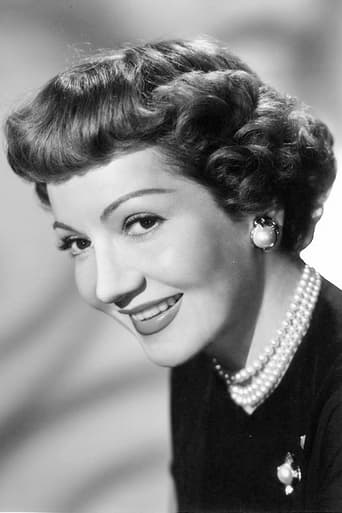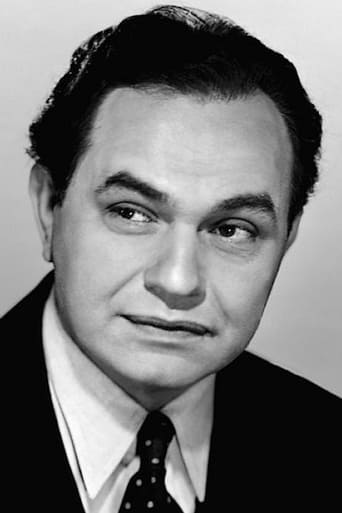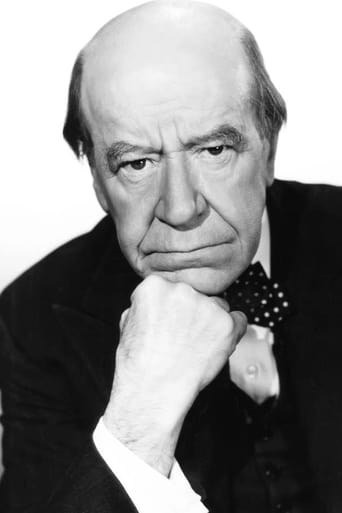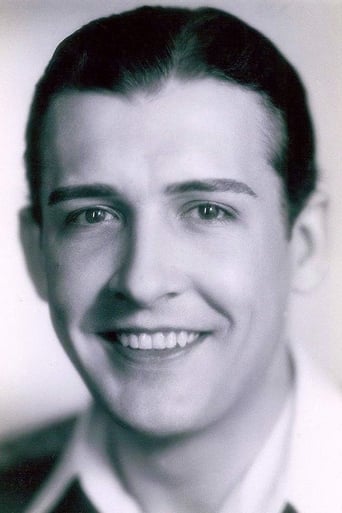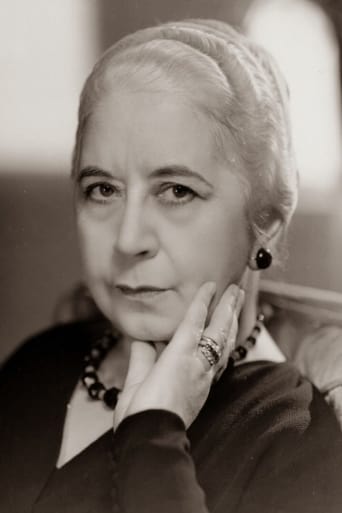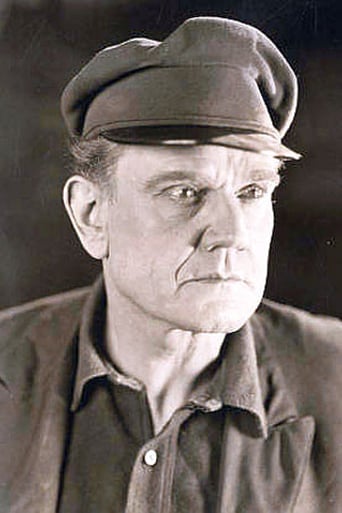Stellead
Don't listen to the Hype. It's awful
FuzzyTagz
If the ambition is to provide two hours of instantly forgettable, popcorn-munching escapism, it succeeds.
TrueHello
Fun premise, good actors, bad writing. This film seemed to have potential at the beginning but it quickly devolves into a trite action film. Ultimately it's very boring.
Kaelan Mccaffrey
Like the great film, it's made with a great deal of visible affection both in front of and behind the camera.
JohnHowardReid
The Great Depression put an end to the huge onslaught of Broadway mystery and suspense plays which reached a peak in 1927. These plays do not generally translate at all well as film noir, although exceptions can be made for The Bat (1926) and The Hole in the Wall (1930). The film version of "The Hole in the Wall" was formerly available on a most interesting VintageFilmBuff DVD. You've all heard of a part-talkie. Well, the VFB release is actually a part-silent, roughly 95% talking, yet 5% silent — and by "silent" I mean dead silent. Except for two sequences, namely music in a night club, and crash effects in the El — there is absolutely no sound at all in the silent action footage that is cut into the movie from time to time. However, 'The Hole in the Wall' does most effectively showcase some really spooky sets. These alone make the movie worth viewing. The characters are somewhat creepy too, but the screenplay chickens out on allowing them to reach their full noir potential. Particularly disappointing is the "geek" (v. Nightmare Alley) who is given a great build-up as a potential menace (and even enacts that part in a publicity still with Donald Meek), but is then allowed to slip away into almost nothing. Edward G. Robinson, of course, is at home as the heavy with a heart, while Claudette Colbert looks appropriately unglamorous as the revengeful convict-turned-fake-mystic.
calvinnme
At times the melodrama is downright hammy and there is really nothing unique about the plot - a group of con artists using a psychic/medium scam to bilk rich patrons, and a girl (Claudette Colbert as Jean) wrongly accused of theft by a rich woman to keep her away from her son, thrown into prison as a result, embittered and swearing revenge when she is released, and joining up with the gang. What is unique about all of this is how sound is used for the first time to give depth to the story.The group of thieves keep a howling madman that they got from a carnival around for the séances, and when he lets out a yowl it is really creepy. The end, with Jean the fake spiritualist actually making contact with the dead, and mouthing the dead man's real words of warning was surprising and could not have been done effectively in a silent film. As for the visuals, they are a mixed bag. For example, there is a train wreck scene that is done oddly. Time is taken to get a real feel of the human toll of the wreck with close-ups of the passengers before and of the wreckage afterwards. But the accident itself looks very fake and amateurish - the train is obviously a miniature model. The interior art design is a bit of a hoot too - I mean who is that supposed to be a statue of in the séance room? It rather looks like Buddha, but not exactly. Then there is one big goof by the thieves that actually draws the police like flies to the "hole in the wall" gang. Such so-called smart crooks would never make such a ridiculous mistake.Edward G. Robinson is really great as "The Fox". For the first time you can see and hear a gangster in a film, and his speech and mannerisms are spot on and very natural. His sweet proposal to Jean, her gentle rejection, and his dignified acceptance of her decision is the acting highlight of the film. Oddly enough Robinson is fourth billed under Claudette Colbert, although this is the first talkie for both of them, neither having been particularly successful in silent films. Besides the familiar faces working their way up, it's interesting and a bit sad to see unfamiliar faces working their way down. David Newell, billed over Robinson, completely fails to impress. He does stand out though because of his halting speech, detached performance, and a fake smile that seems to be stapled to his face. I just can't see this guy staying on Jean's mind since they were childhood sweethearts and her passing up The Fox for this cardboard cutout.The whole thing plays out a bit like an experiment in early sound film, and in December 1928 when it was shot that is pretty much what it was - even director Robert Florey looked at it that way, trying a number of different new techniques and players in this one film so he would know what would work. If you enjoy the early talkies I recommend you give this one a look.
kidboots
Both Claudette Colbert and Edward G. Robinson were stars of the stage when Paramount's Long Island Studios contracted them to star in "The Hole in the Wall", a gritty crime drama dealing with kidnapping and spiritualism. Colbert had initially been the darling of Broadway for her performance in "The Barker" (225 performances) but a succession of bad plays and the advent of talking pictures made her reconsider her decision about the movies. (She had made a silent "For the Love of Mike" (1927) and absolutely hated it.) Robinson only accepted the role of "The Fox" because the deal was lucrative - he didn't like the script or the second billing to Miss Colbert.By mid 1929 a lot of people were despairing of talkies - they were static and action was only a word that directors used to commence a scene. Apart from an initial "talkie" sequence, the film opens with a pretty spectacular train derailment, with super imposed images of screaming people, flames and rescue workers. Among the dead is Madame Mysteria, a vital part of "the hole in the wall" gang, headed by "The Fox" (Edward G. Robinson), a bunch of jewel thieves, who steal from the wealthy society people that are drawn to Madame Mysteria's readings. Without Madame, the group is foundering but suddenly Jean Oliver (Claudette Colbert) appears at their headquarters. She has just spent 4 years in prison on a trumped up larceny charge. She was framed by her employee, Mrs Ramsey (Louise Closser Hale), a bitter woman who was jealous of her son's constant attention to Jean. Meeting one of the Fox's gang in prison, she arrives at the Hole in the Wall, eager for a job and with revenge in her heart. She has already developed a plan to kidnap her former employer's grand daughter, "bring her up to lie, cheat and steal and when she comes before a Judge, I can say to Mrs. Ramsey, behold your grand daughter!!!" The Fox installs her as the new Madame Mysteria, the real Madame he identifies as Jean Oliver. Meanwhile a newspaper reporter, (Jean's old childhood sweetheart) (David Newell) is putting two and two together - linking recent robberies with spiritualist Madame Mysteria.The sets are a combination of Art Deco and Expressionistic "Dr. Caligari" types - many of these very old movies had futuristic sets. Colbert and Robinson both seemed to learn on the job. Robinson's first scene - he seemed to speak very slowly and in Colbert's she seemed pretty jittery and didn't know what to do with her hands. To give Colbert her due, she was saddled with a "Oh Woe is Me" speech and had to put her hand to her brow!! Fortunately the plot thickened in the last 20 minutes - including a child being snatched from a watery grave and a character called "Dogface", a mad man locked in his room, who didn't seem to serve any purpose to the plot, except at the end when he springs into action. Midway through the film, Colbert and Robinson had relaxed enough in their acting to look as though they definitely had a future in talkies.One person who didn't was David Newell. There was obviously a reason why Paramount dropped him from their roster. As Jean's childhood love, he was very wooden and uptight. I have also seen him in another early talkie, "Darkened Rooms" (I wonder what that one was about - could it have been "phoney mediums")!! It was made by Paramount at the end of 1929 and his acting hadn't improved.Recommended.
HarlowMGM
THE HOLE IN THE WALL is a crime melodrama where only one gun is seen fleetingly. Edward G. Robinson stars as "The Fox", leader of a small gang who has found a new racket that's a cinch, running a fake spiritual medium which finds out information about the belongings of rich believing clients which he then steals. When his "Madame Mysteria" is killed in a railway crash (an incredibly cheap "special effect" badly done with toys which even 1929 audience must have laughed at) he is without a female front for the organization. Within hours into the dungeon-like headquarters/business walks Claudette Colbert, fresh out of jail after being falsely accused of theft. Unable to find a job, she comes the headquarters having heard she might could find a place in the racket from sources she knew in the slammer. Robinson immediately sees her as his new medium and after a practice bit, she agrees to do it - in exchange for her own illegal scheme - she wants to kidnap the granddaughter of the woman who framed her and keep her, raising her as a crook she was accusing of being.This 1929 melodrama is quite bad and yet rather interesting. This is mainly thanks to top-billed Claudette Colbert, clearly a natural for films, she gives a smooth performance in a highly wavering film. Edward G. Robinson does come not off quite as well and he is hampered by the heavy makeup often given men in mediocre early talkies, black lips and all. It's easy to see why Paramount kept her and passed on him. The big surprise is David Newell, the second lead, who does a very competent job as the good-looking young reporter who turns out to have been an old beau of Claudette's. Newell is very much the type of leading man Paramount loved - he definitely foreshadows Ray Milland and Fred MacMurray - yet his stint as a Paramount player was brief (he appears to have been let go during the massive cutbacks of late 1930 which saw Jean Arthur, Mary Brian, and many other secondary performers canned at the studio.) Newell was playing small parts in 1932 and by 1933 he was beginning an extremely long career as an unbilled bit player.Meek character actor Donald Meek makes a rather unconvincing gang member and then there is a character supposedly purchased from a freak show named "Dogface" who is kept around inexplicably since he never really has anything to do in the story. Louise Closser Hale's grande dame is written so imperviously she's barely given pause to the fact that her granddaughter is missing with no leads. Actress Nellie Salvage, a minor player in silent films, has her only talking role as the ill-fated Madame.The print I viewed was in quite good shape, however it ran only 63 minutes although there was no continuity problem suggesting it may have never been the 73 minutes IMDb lists it at. The movie is also a complete talkie, although there are a few seconds of non-sound when characters appear to be conversing but this was probably dropouts in the print.The movie ends somewhat abruptly, as often appears to be the case in early Paramount talkies. The set designer and cinematographer do a considerably better job creating a fairly spooky, creepy ambiance than does director Florey. Worth seeing only as a curio - or for fans of the cast.
